Currently, the Corona Virus Disease-2019 (COVID-19) is rabidly spreading across the globe. The growing rate of contagion suggests that containment is not going to be possible. For the majority of infected, the virus produces flu-like symptoms and may lead to pneumonia. For others, however, it can be life threatening. The spreading COVID-19 is already disrupting global markets, has shut down borders, and has been wreaking havoc on the worldwide psyche. What could have fueled such a widespread pandemic? It is understood that the early cases of COVID-19 came from Wuhan, the capital city of China’s Hubei province, but how did the virus reach every corner of our world? Perhaps, the answer lies with people wanting to see the world, to interact with new cultures, and form new memories with others. Tourism may have helped the virus reach the distances that it has. Some people travel to learn, to grow, and to become versed in the ways of the world in their pursuit to become more “worldly” individuals. However, as the virus spreads, it allows the virus to do the same and evolve.
In January 2020, over 7 million Chinese chose to celebrate the Chinese New Year by traveling abroad. Just a month earlier, COVID-19 began rapidly spreading in Mainland China. While Chinese health officials acknowledged a problem with the growing outbreak, the Chinese government initially downplayed the epidemic and did not take the adequate precautions for the safety of the rest of the world, such as restricting tourism. As the Chinese government did not restrict tourisms, tourists may have spread the virus.
It is now known that COVID-19 is extremely contagious. It is believed that infection can occur within 6 feet of someone carrying the virus. An asymptomatic person may still spread the virus unknowingly and continue the contagion. Furthermore, COVID-19 infection becomes possible from the surfaces in which an infected person has contact with. On contaminated surfaces, COVID-19 has been observed to live up to 9 days.
As of today, the majority of tourist hotspots have infections. It is possible that each hotspot may have acted as an amplifier of the virus. Italy, for example, has exploded with the virus and is now the most infected country outside of China. Two weeks prior to the massive Italian outbreak was the carnival celebration in northern Italy, where tens of thousands came to celebrate in northern Italy. Once tourists become infected, they transmit the virus to other tourists, other tourist locations or back to their home countries as what may be evident with Iran.
As COVID-19 continues to spread across our globe and becomes more a “worldly” tourist, it has a faster rate of mutating into a more successful virus. As a virus mutates, it may become more successful at transmitting throughout the world. All viruses mutate in its genome the more it transmits and enters into a stage of natural selection. Evolution may become a more significant threat if COVID-19 has an outbreak in another densely populated country, such as India, which currently has a few dozen documented cases. The mutated form of the virus that can transmit the fastest and replicate the most effective in a host’s body will be most resilient and most likely to continue. Chinese researches say that the virus has already mutated and has created at least two strands, the aggressive “L type” and the “S type.”
The mutations that occur from traveling and that are not beneficial to COVID-19 will be discarded through natural selection. The mutations that lead to the COVID-19 being more resilient during its transmission will become incorporated into the virus’s core genome. COVID-19 can only become its most resilient form by evolving through a large number of genetically different hosts. In other words, like the Chinese proverb, the virus “learns more from traveling a thousand miles.” However, the more the COVID-19 spreads throughout the world, the more mutations the virus undergoes and the greater an effect on the globe it may have. Unfortunately, we will know what the effects on national security and cooperation will be when the pandemic is controlled. We are very well at the frontend of the COVID-19 pandemic and I am sure the “tag along tourist” has a lot more to see.
Chris Keller is a first year Master’s student, studying International Security at the Schar School of Policy and Government as well as completing course work at Georgetown University. His research interests largely revolve around foreign affairs and rebel group interplay. In his current research, he is exploring ethical choice models in diplomacy.
Photo can be found here.




